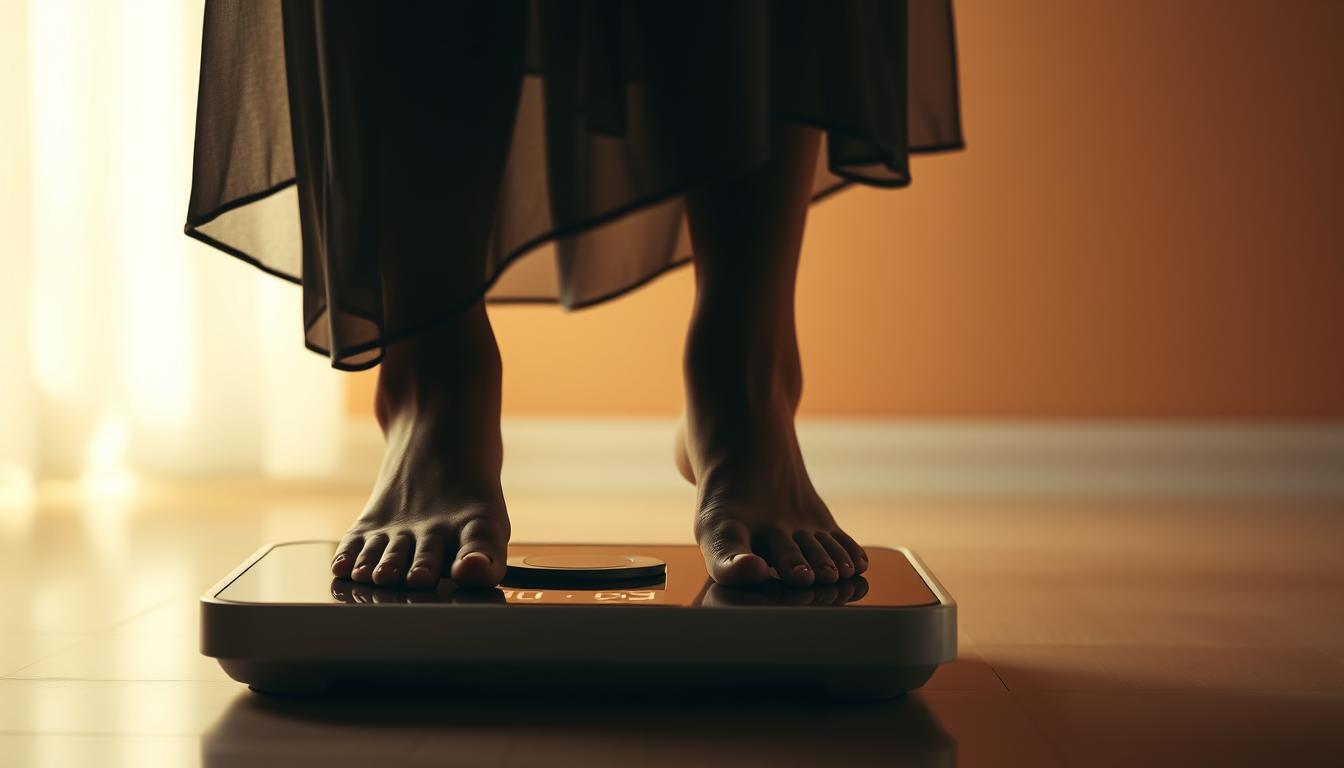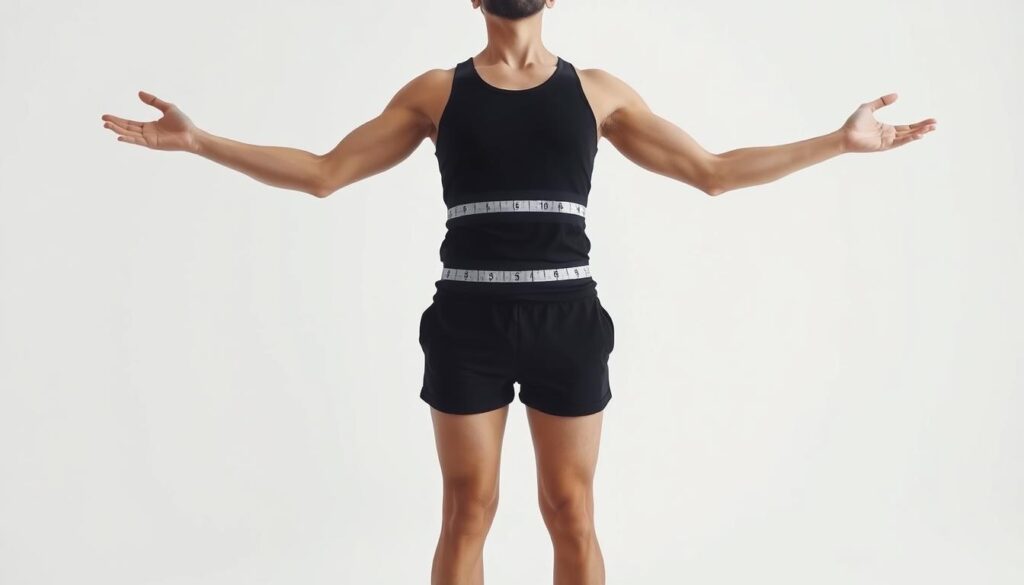“The greatest wealth is health.” – Virgil. This timeless quote underscores the importance of focusing on overall well-being rather than just the number on the scale.
When embarking on a weight loss journey, many of us are conditioned to rely on the scale as the primary indicator of progress. However, this method can be misleading and demotivating due to weight fluctuations.
We will explore comprehensive methods to monitor your progress beyond the scale, focusing on actual body changes and overall health improvements. By tracking multiple aspects of your transformation, you can gain a more accurate and motivating picture of your progress.
Key Takeaways
- Alternative methods to track weight loss beyond the scale.
- The importance of measuring body composition changes.
- How tracking progress can boost motivation.
- Effective techniques for monitoring health improvements.
- A holistic approach to achieving sustainable weight loss results.
Why Traditional Scales Can Be Misleading
The numbers on a traditional scale don’t always tell the whole story of one’s weight loss journey. While it might seem like a straightforward measure, weight can be influenced by numerous factors, making it a less reliable indicator of progress than one might expect.
The Limitations of Weight as a Measurement
Weight is not a direct measure of health or body composition. It’s a composite of various factors including muscle mass, bone density, water retention, and body fat. Therefore, changes in weight don’t necessarily reflect changes in body fat or overall health. For instance, an increase in muscle mass can sometimes mask fat loss, leading to a misleading reading on the scale.
How Weight Fluctuates Throughout the Day
It’s normal for weight to fluctuate between 1-2kg over the course of a day due to various factors such as food and water intake, sodium consumption, bathroom habits, and exercise.
These fluctuations can be significant, with weight varying by 1-5 pounds throughout a single day. Factors contributing to this variability include:
- Food and water intake directly impacting the scale
- Sodium consumption affecting water retention
- Bathroom habits influencing weight measurements
- Exercise causing temporary water retention as muscles repair
Weighing at different times of the day yields different results, making consistent comparison challenging. Understanding these fluctuations is key to interpreting weight changes without becoming discouraged.
| Factor | Effect on Weight |
|---|---|
| Food and Water Intake | Temporary increase due to consumption |
| Sodium Consumption | Water retention, temporary weight gain |
| Bathroom Habits | Weight decrease after bowel movements or urination |
| Exercise | Temporary water retention, potential short-term weight increase |
Using Body Measurements to Track Progress
One of the most accurate ways to track weight loss is through body measurements. This method provides a clear picture of the changes in your body over time, helping you stay motivated and focused on your goals. By regularly taking your measurements, you can monitor the progress of your weight loss journey without relying on a scale.
Essential Areas to Measure
To effectively track your progress, it’s crucial to measure the right areas of your body. Key areas to focus on include:
- Stomach: Measure across the belly button or at the smallest part of the waist.
- Bust: Measure around your chest across the nipple line.
- Hips: Measure around the biggest part of the hips.
- Thighs: Measure around the biggest part of the thighs.
- Calves: Measure around the widest part of the calves.
For a more comprehensive understanding, consider recording these measurements regularly.
| Body Part | Measurement Guide |
|---|---|
| Stomach | Across the belly button or smallest waist part |
| Bust | Around the chest across the nipple line |
| Hips | Around the biggest part of the hips |
| Thighs | Around the biggest part of the thighs |
| Calves | Around the widest part of the calves |
How to Take Accurate Measurements
Taking accurate measurements is vital for tracking progress. Use a flexible tape measure and ensure it’s level and not too tight or too loose. Measure at the same time of day, preferably in the morning before eating, to maintain consistency. For more tips on effective weight loss strategies, visit our page on BMI weight loss strategies.
To ensure you’re measuring the same spots each time, mark the areas with a pen or use a landmark on your body. Record your measurements regularly, ideally every 2-4 weeks, to track meaningful changes. You can use apps, spreadsheets, or notebooks to keep track of your progress.
Visual Methods to Track Weight Loss Without a Scale
By leveraging visual cues, individuals can effectively monitor their weight loss journey without relying on a scale. This approach focuses on observable changes in the body, providing a more holistic view of progress.
Taking Effective Progress Photos
Progress photos are a powerful tool for tracking weight loss and fat reduction. To take effective progress photos, consider the following: take photos in the same lighting and from the same angles each time, wear similar clothing, and capture full-body shots as well as close-ups. This visual documentation helps in noticing changes that might not be apparent otherwise.
Using Clothing as a Measurement Tool
Using clothes as a measurement tool is another effective visual method. Choose an item of clothing that is a little tight, and try it on every few weeks to see how it fits. Note where it starts to feel loose and how you feel wearing it. This method provides immediate, tangible feedback about body composition changes. The “clothes don’t lie” principle is motivating, as looser clothes fit is often more encouraging than scale numbers.
Selecting the right clothing items is key. Non-stretch jeans or fitted shirts are ideal. Creating a “fit wardrobe” with items in different sizes can help track progress over time. Different clothing items can indicate changes in specific body areas; for example, pants for the lower body and shirts for the upper body.
Tracking Physical Performance Improvements
To gauge our progress effectively, we need to look beyond the scale and focus on tracking physical performance improvements. This approach allows us to assess our fitness journey more comprehensively, taking into account various aspects of our physical health and capabilities.
Monitoring Energy Levels Throughout the Day
One of the key indicators of improving physical performance is an increase in energy levels throughout the day. As we engage in regular exercise and our bodies adapt, we typically experience a boost in our overall energy, enabling us to tackle daily tasks with more vigor and efficiency.
Assessing Everyday Activities
Another way to track physical performance improvements is by assessing how we perform during everyday activities. Whether it’s carrying groceries, playing with our kids, or simply walking up the stairs, we can notice improvements in our strength and endurance over time.
Setting Benchmark Tests
To objectively measure our progress, we can set benchmark tests. According to Mosier, “Benchmark testing consists of doing a challenge and marking down your results, then returning to that challenge in four weeks to retest and see where you’re at.” Examples include measuring how many burpees or squats we can do in two minutes or how fast we can run a mile. This method provides a clear indication of our progress and helps us adjust our training to reach our goal.
| Benchmark Test | Initial Result | Result After 4 Weeks |
|---|---|---|
| Burpees in 2 minutes | 20 | 25 |
| Running a mile | 10 minutes | 8.5 minutes |
| Squats in 2 minutes | 30 | 35 |
How to Track Weight Loss Without a Scale Through Lifestyle Changes
To effectively track weight loss without relying on a scale, it’s essential to monitor significant lifestyle changes. By focusing on these adjustments, individuals can gain a more comprehensive understanding of their progress.
Monitoring Sleep Quality and Duration
One crucial aspect of lifestyle that impacts weight loss is sleep quality and duration. Poor sleep can disrupt hormones that regulate hunger and fullness, leading to potential weight gain or stagnation in weight loss. By tracking sleep patterns, individuals can identify areas for improvement. This can be done using sleep tracking apps or journals. Ensuring adequate sleep each night can support weight loss efforts and overall health.
Tracking Healthy Habits Instead of Weight
Another effective strategy is to focus on tracking healthy habits rather than weight. “Pick a healthy habit, like eating vegetables with every meal, and track your consistency,” advises Brynn Putnam, founder of Refine Method in NYC. By monitoring habits such as vegetable intake, water consumption, or exercise frequency, individuals can receive immediate feedback and reinforcement. This approach helps in identifying patterns and triggers that influence weight management. Effective methods for tracking habits include using apps, journals, or simple checklists. Celebrating consistency in these habits can improve psychological well-being during the weight loss process.
Non-Scale Victories Worth Celebrating
As we journey towards a healthier lifestyle, it’s essential to recognize and celebrate the victories that go beyond the scale. Focusing on these achievements can provide motivation and a more comprehensive understanding of our progress.
Physical Changes Beyond Weight
When we focus on health and fitness, we often see physical changes that aren’t reflected on the scale. For instance, Sarah, who lost 10 pounds in three months without weighing herself, noticed significant improvements in her overall well-being. She started walking 2.5 miles daily and made dietary changes, such as reducing refined carbohydrates and sugar.
Some of the physical changes worth celebrating include:
- Increased energy levels
- Improved sleep quality
- Enhanced physical performance
These changes indicate a positive shift in our body‘s health and functionality.
Mental and Emotional Improvements
Mental and emotional improvements are equally significant victories in our health journey. As we adopt healthier habits, we often experience reduced anxiety and increased confidence. These improvements can precede physical changes and serve as early motivators.
“I didn’t like the obsession associated with checking the scale all the time. Listening to my friends talk about how the numbers on their scales fluctuated made me anxious about my weight.” —Sarah
Some key mental and emotional improvements include:
| Improvement | Description | Benefit |
|---|---|---|
| Improved Mood | Healthier lifestyle habits contribute to a more positive outlook. | Enhanced overall well-being |
| Reduced Anxiety | Less stress about weight and more focus on health. | Better mental health |
| Increased Confidence | Achieving health goals boosts self-esteem. | More resilience in facing challenges |
Creating Your Personal Weight-Free Tracking System
To effectively track progress without relying on a scale, we must develop a comprehensive and personalized system that combines multiple methods.
By selecting tracking methods that align with individual weight loss goals, preferences, and lifestyle, we can establish a sustainable routine that provides useful data without becoming obsessive.
Interpreting multiple data points together helps identify patterns and make informed adjustments to the weight loss journey. This balanced approach celebrates various forms of progress, maintaining motivation and driving success.
As goals evolve, tracking methods can be adjusted. Consulting with health professionals can also provide valuable insights into effective weight loss strategies. By adopting a personalized tracking system, individuals can achieve sustainable results and improve their overall well-being.


